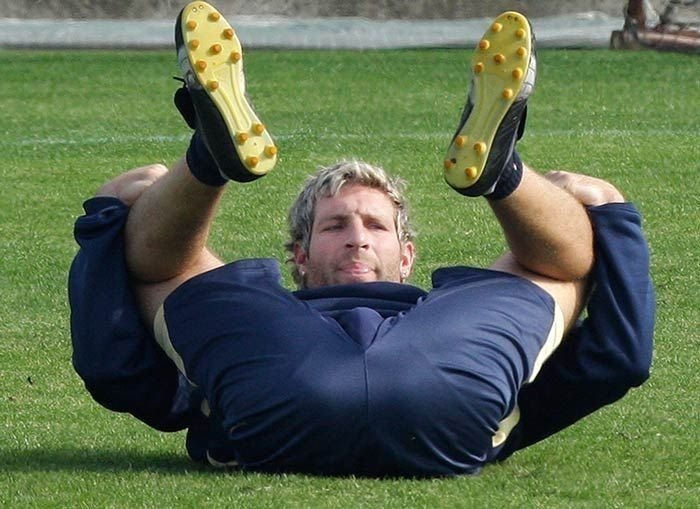|
|
Soccer Moments
|
The primary law is that players other than goalkeepers may not deliberately handle the ball with their hands or arms during play, though they do use their hands during a throw-in restart. Although players usually use their feet to move the ball around, they may use any part of their body other than their hands or arms. Within normal play, all players are free to play the ball in any direction and move throughout the pitch, though the ball cannot be received in an offside position.
In typical game play, players attempt to create goal-scoring opportunities through individual control of the ball, such as by dribbling, passing the ball to a team-mate, and by taking shots at the goal, which is guarded by the opposing goalkeeper. Opposing players may try to regain control of the ball by intercepting a pass or through tackling the opponent in possession of the ball; however, physical contact between opponents is restricted. Football is generally a free-flowing game, with play stopping only when the ball has left the field of play or when play is stopped by the referee for an infringement of the rules. After a stoppage, play recommences with a specified restart.
At a professional level, most matches produce only a few goals. For example, the 2005–06 season of the English Premier League produced an average of 2.48 goals per match. The Laws of the Game do not specify any player positions other than goalkeeper, but a number of specialised roles have evolved. Broadly, these include three main categories: strikers, or forwards, whose main task is to score goals; defenders, who specialise in preventing their opponents from scoring; and midfielders, who dispossess the opposition and keep possession of the ball in order to pass it to the forwards on their team. Players in these positions are referred to as outfield players, in order to distinguish them from the single goalkeeper. These positions are further subdivided according to the area of the field in which the player spends most time. For example, there are central defenders, and left and right midfielders. The ten outfield players may be arranged in any combination. The number of players in each position determines the style of the team's play; more forwards and fewer defenders creates a more aggressive and offensive-minded game, while the reverse creates a slower, more defensive style of play. While players typically spend most of the game in a specific position, there are few restrictions on player movement, and players can switch positions at any time. The layout of a team's players is known as a formation. Defining the team's formation and tactics is usually the prerogative of the team's manager.
|
|









